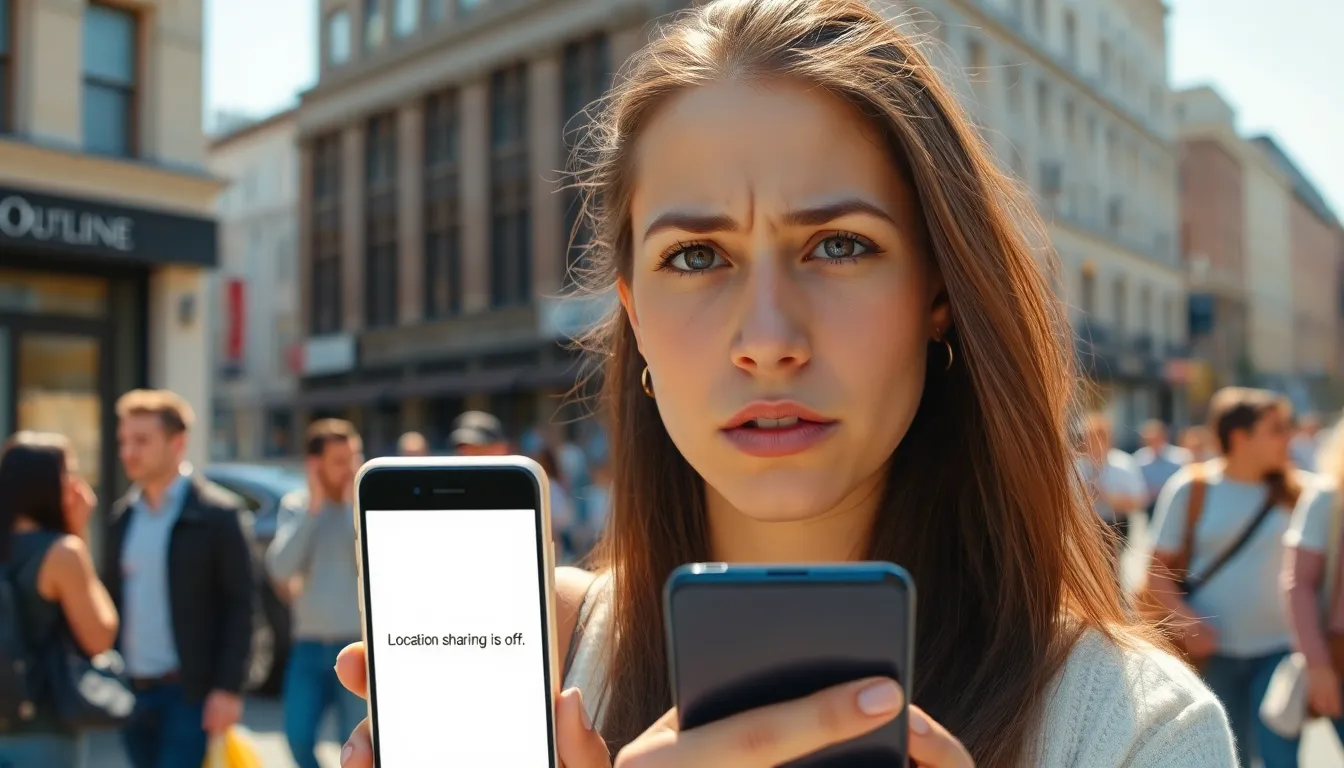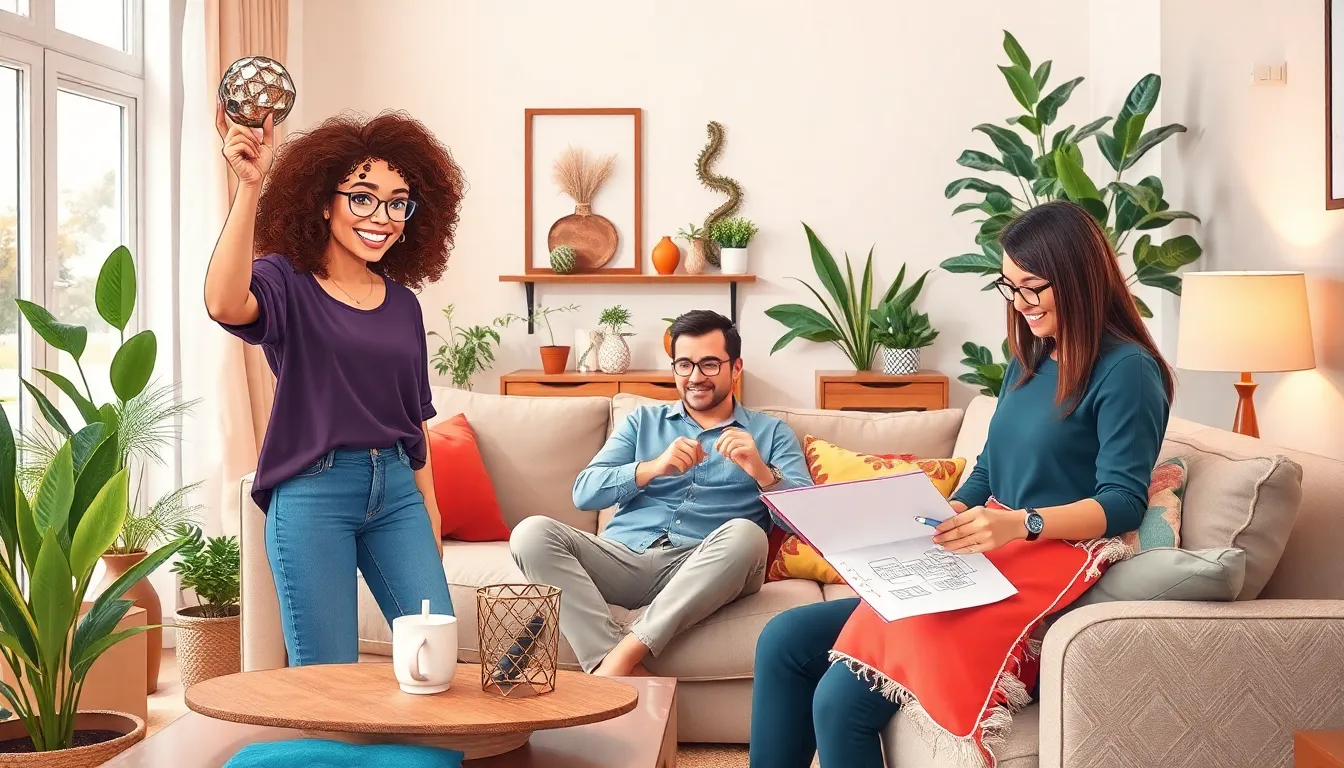Table of Contents
ToggleEver found yourself in a situation where you desperately wanted to share your location, only to be met with the dreaded “location sharing is off” message? It’s like trying to send a text with a dead phone—frustrating and downright confusing. Whether you’re trying to coordinate a meetup or let family know you’re safe, not being able to share your location can feel like being lost in a maze with no exit.
Understanding Location Sharing
Location sharing allows individuals to communicate their precise geographic position to others. This tool enhances real-time connectivity, making it easier to find or reach someone.
What Is Location Sharing?
Location sharing refers to the process of sending a device’s GPS coordinates or designated location to another party. By utilizing built-in features in smartphones and applications, users can display their whereabouts for a specific duration. Many popular apps, such as Google Maps and social media platforms, offer this capability. Typically, permission is required before sharing location, ensuring privacy and security for users.
Importance of Location Sharing
Sharing location plays a crucial role in enhancing safety and convenience. It enables friends and family to track each other in emergencies or coordinate meetups with greater ease. Many delivery services rely on location sharing for accurate and timely deliveries. Furthermore, parents benefit by monitoring their children’s movements to ensure their safety. Overall, location sharing fosters better communication, promotes safety, and supports logistical planning during daily activities.
Common Reasons for Location Sharing Issues
Understanding why location sharing might not work involves several factors. Users often encounter difficulties due to device settings, app permissions, or internet connectivity.
Device Settings
Device settings play a significant role in location sharing. Many devices require GPS to be enabled in order to share location information. Without activating location services, sending your position won’t occur. Additionally, some phones provide options to restrict location access based on battery-saving modes. Users should check settings regularly to ensure they align with sharing preferences.
App Permissions
App permissions affect whether location sharing functions properly. Specific apps need user approval to access location data. Granting permission allows these applications to share the user’s location effectively. In some instances, permissions might revert back to restricted modes after updates or app installations. Users must confirm permissions for each app that intends to share location information.
Internet Connectivity
Internet connectivity impacts the ability to share location effectively. A stable connection ensures accurate GPS tracking and location sharing. If the signal is weak, the app may struggle to provide real-time updates. Network issues can also hinder data transfer, delaying the location sharing process. Ensuring reliable Wi-Fi or cellular data strengthens the likelihood of smooth location sharing.
Troubleshooting Location Sharing Problems
Location sharing problems can often stem from simple settings or configurations. Addressing these issues involves checking various aspects of the device and apps used for sharing.
Checking Location Settings
Adjusting the location settings on a device resolves many sharing issues. Ensure GPS is enabled in the device settings. In addition, users must verify that the location services permissions are granted for the specific app in use. If a device operates in battery-saving mode, this can restrict access to location data. Confirming permission settings can improve the functionality of location sharing. Furthermore, people must set the location accuracy to high for better reliability.
Updating Apps
Keeping apps updated plays a significant role in maintaining location sharing capabilities. Developers often release updates to fix bugs and enhance features. Installing the latest version can ensure all permissions are retained and functioning properly. Users should frequently check for updates in their app stores. Moreover, outdated apps may face compatibility issues that hinder location access. Regular updates not only improve performance but also address security vulnerabilities linked to location sharing.
Restarting Devices
Sometimes, a simple restart of a device resolves location sharing challenges. Restarting clears temporary glitches that may affect app performance. It refreshes system processes, potentially restoring proper functionality of GPS and location services. This step is often overlooked but can lead to quick resolutions. Users should consider restarting both the device and the apps involved in location sharing. Frequent restarts, especially after updates or changes in settings, can enhance overall device performance and reliability in sharing locations.
Alternative Solutions
When location sharing fails, alternatives exist to stay connected. Users can explore different methods to communicate their whereabouts.
Using Different Apps
Exploring alternative applications can solve location sharing issues. Popular choices include Google Maps and Find My Friends, which facilitate real-time sharing. Each app features unique settings and permissions that may suit specific needs. Social media platforms like Facebook also offer location tagging options. Testing various tools helps determine the most reliable for individual situations. Moreover, choosing an app with robust GPS functionality can enhance accuracy.
Manual Location Sharing
Manual sharing provides an immediate solution when automatic location sharing fails. Users can send their coordinates via text or messaging apps, ensuring family and friends stay informed. Providing addresses or landmarks can also assist in guiding others. Taking a screenshot of the map marked with the current location allows for easy sharing. This method avoids reliance on device settings or app permissions. Additionally, calling or video chatting offers real-time updates on location. Exploring these manual options fosters smoother communications when technology presents challenges.
Experiencing difficulties with location sharing can be frustrating but understanding the underlying reasons can help alleviate some of that stress. By addressing device settings app permissions and connectivity issues users can restore functionality and enhance their ability to share their whereabouts.
When automatic sharing fails exploring alternative solutions ensures that communication remains open and effective. Whether through different apps or manual methods staying connected is possible even in challenging situations. Embracing these strategies not only promotes safety but also fosters better coordination in daily life.







